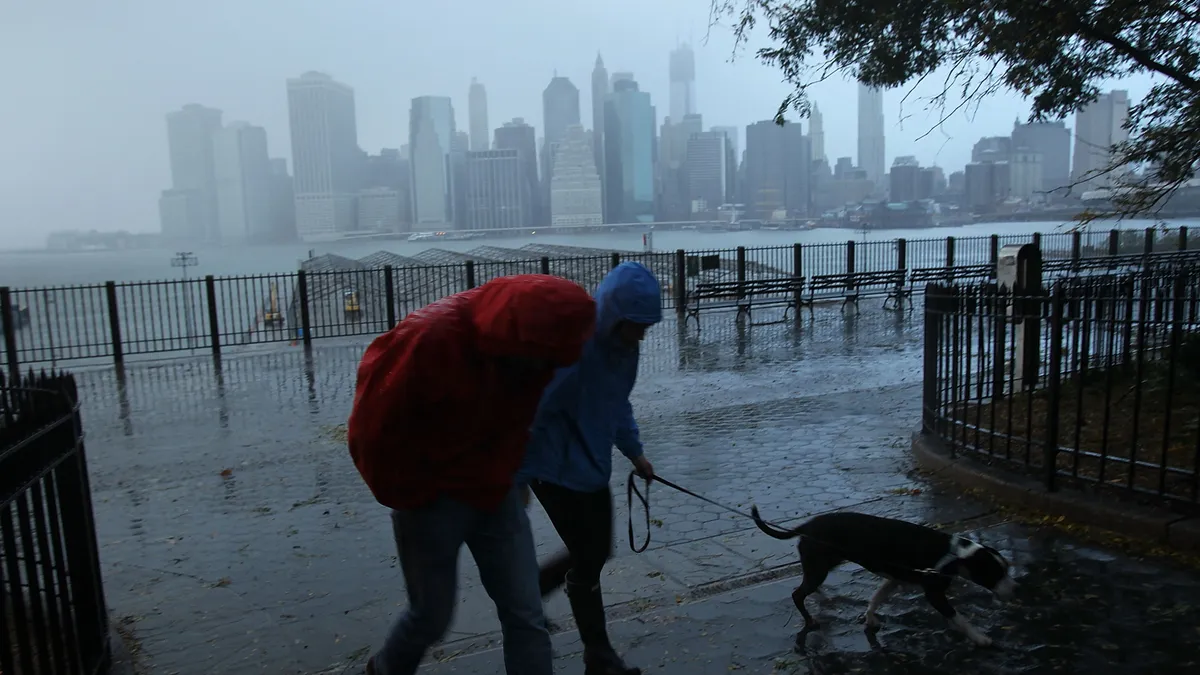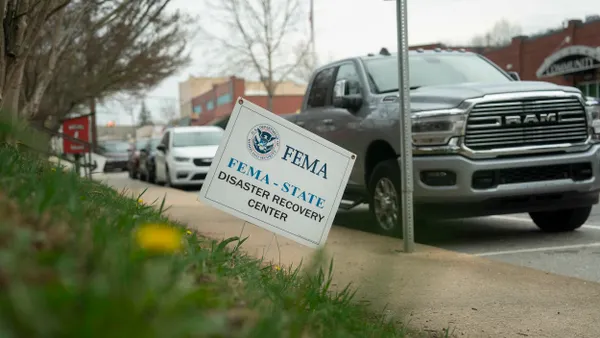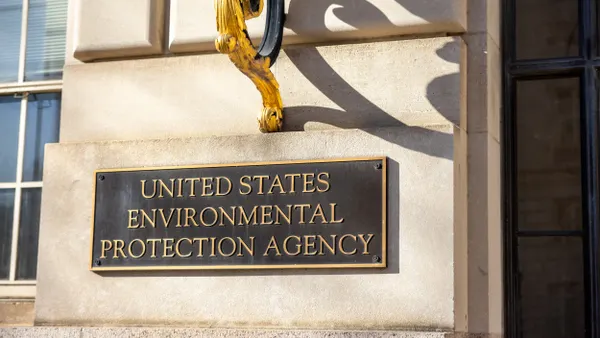Dive Brief:
- Communities looking to upgrade their stormwater and sewer infrastructure can access $41 million in federal funds, the U.S. Environmental Protection Agency announced on May 9.
- The Sewer Overflow and Stormwater Reuse Municipal Grant program aims to prepare local stormwater collection systems to handle increasingly intense rain events driven by climate change and to prevent polluted runoff from entering creeks, streams and rivers.
- “Stormwater runoff is one of the biggest pollution challenges facing our water ecosystems,” said Bruno Pigott, EPA acting assistant administrator for water, in a statement.
Dive Insight:
Cities face a shifting stormwater picture that can affect infrastructure design. More frequent intense rain means that existing systems will exceed capacity more often, said Lauren McPhillips, an assistant professor of civil and environmental engineering at Penn State University, speaking at a December SciLine event.
Increasing urbanization also exacerbates the challenge. “One thing that’s common across any size city is that you have hard surfaces added, and that’s always going to have the same impact of preventing water from soaking into the ground,” she said. In cities with combined sewers, stormwater created by heavy rain events can prompt wastewater overflows.
Many pollutants, including trash, chemicals, oils and dirt, get carried along for the ride in stormwater runoff and end up in waterways, the EPA says. But managing that runoff can be expensive and complex, and bigger cities tend to have more financial resources to implement solutions, McPhillips said.
The Biden administration attempted to give smaller, less wealthy communities a leg up in the 2021 infrastructure law by setting aside a quarter of the funds for projects in small and/or financially distressed communities and preventing states from passing along cost-share requirements to those communities.
Green stormwater infrastructure, like rain gardens, is one way to help capture, slow down and improve the quality of runoff, McPhillips said. With that infrastructure, “We are holding that water back and slowing it down from reaching the storm sewers or some receiving water body,” she said.
She recommend a “systems approach” to thinking about green stormwater infrastructure, since a single piece of infrastructure won’t be able to handle all the runoff from a large storm.
“We have to think about, how can we actually plan for areas of our city to be OK with flooding?” she said. “This could mean designing our recreation infrastructure to also serve a dual purpose as stormwater retention infrastructure in a large event. If you can’t play soccer ... once a year because the field is flooded, that’s a lot better than having that water ending up into areas where it can have worse impacts.”











